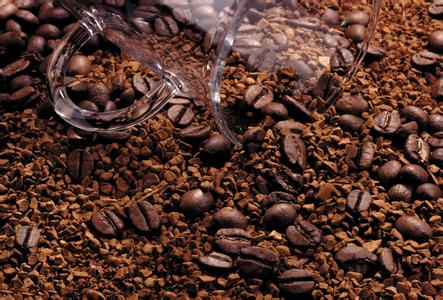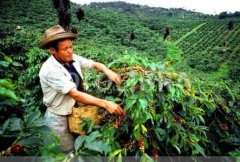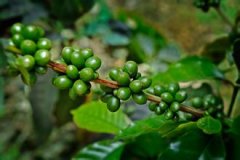A brief introduction to the characteristics of the flavor and taste manor in the coffee producing area of Xidamo Shaqisuo, which is longer in Huigan.

Growing in western Ethiopia, 4900-5900 feet (Wollega province) plateau, north of Jima, mostly wild, annual output is about 500000bags/60kg, export is mostly G5/G4, bean body is larger and longer than Longberry, a little brown in green, taste similar to less jasmine tea, more bitter, lack of rising Hara, slightly sour, slightly fruity and wine aroma, but slightly inferior to Hara, but with good texture and viscosity. So the beans in Jinbi District are jokingly called "poorman'". SHarar ".
Gima, which accounts for about 50 per cent of Ethiopia's annual output, grows between 4400 and 6000 feet above sea level in the country's southwestern highlands (the border between Kaffa and Illubabor provinces) and is usually exported to G5/G4.
However, in recent years, about 10% or 20% of Gima has been used to make up for the lack of taste of coffee, but its quality has gradually declined to its own level, but there are bipolar comments on coffee buyers (my friend only uses Gima as the base of espresso in his store, and its strong flavor surprises me). The coffee is like a hara, which follows the ancient method of sunbathing. It is also a little sour but slightly inferior to Hara, with medium texture and rugged earthy taste.
Ghimbi & # 39; Lekenpuri (Lekempti)
The taste is complex but balanced, with better throat rhyme in deep culture and longer back sweet, which is one of the materials that many bakers like to use as comprehensive beans, of course, it can also be used as a good single product, suitable for drinking after meals.
Lim (Limu)
Growing in the western highlands of southern Ethiopia (the border between Shewa and Sidmo), east of Jima, north of Sidamo, most Europeans and Americans prefer 3600-6200 feet above sea level, most of them are washed with water, their annual output is about 110000bags/60kg, most of them are round (15/16scr), the color is green and bluish, the export is mostly G2, the taste is similar to Yegashev, but the viscosity is thin, but the fragrance of flowers and fruit are obvious. The sour taste is also softer than Yegashev, the more irritating acidity, the aftertaste is similar to the wine, and has a good and balanced quality. it is a noteworthy Ethiopian boutique coffee after Yegashev, but almost all limes are vertically integrated and exported by Ethiopian coffee organizations, so it is almost rare to see them in China.
It is heard that this kind of baking is more suitable for air flow medium baking, not suitable for deep baking, and the better flavor after baking is two to three days. In fact, the good Lim is on a par with Yegashev (this is actually a subjective consciousness of different opinions).
Growing in the southernmost Ethiopian plateau at an altitude of 4600-7200 feet (Sidamo province), southeast of Jima, just south of the capital, usually sweet, but also loved by most people, its annual output is about 225000bags/60kg, bean body is smaller than Longberry, green with ash, in the Sidamo sun drying field, coffee is placed in hemp net wooden racks, workers take turns in the sun exposure, manual stirring coffee Sun Sidamo is usually marked with G4 exits, while water-washed Sidamo has more G2 exits because of its better sun treatment.
The taste of the sun is close to the smell of flowers, but it is about a little earthy. Water washing has a nutty fruit aroma with a slight cocoa aroma, but what the two pieces have in common is smooth taste and viscosity, comfortable and pleasant acidity and fragrance. Medium roasting is suitable for individual products, while deep roasting is suitable for blending coffee and good Espresso base.
Yega Xuefei (Yirga-Cheffe)
The origin of the name is made up of two parts, Yirga is a town name of Sidamo, which means stable, and Cheffee means municipality.
It grows in the southern Ethiopian plateau at an altitude of 5700-7800 feet above sea level. It is located in the northwest of Sidamo province and around Lake Abaya. It usually tastes sweet and is liked by most people. Its annual output is about 225000bags/60kg. The bean body is smaller than Longberry, and it is greenish and gray in color. Most of it is washed. In the washing plant, the coffee fruit is fermented in the storage tank full of water after harvest, and the workers use a simple wooden rake to stir it to facilitate the smooth cleaning. The washing plant always has a pungent acid fermentation smell and the sound of the fruits in the sink colliding with each other. After the fruit is sticky and soft, it is directly shelled and cleaned, leaving only the fruit covered with sheepskin. After the final washing, the fruit is dried directly outside the washing plant.
A complex with a taste similar to lemon and citrus, with excellent viscosity and complex flavor (I think it is sometimes suspected of being overemphasized and exaggerated because of its loud name, even though I like its flavor). Most of them are exported to G2, suitable for medium baking as a single product.
In addition, it is worth mentioning that most of them are produced by state-owned institutions, but the quantity is small and is not well known to the world. Teppi and Bebeka;Teppi, which are lightly described here, grow between 3600 and 6200 feet above sea level, with an annual output of about 50000 bags and 60kg. Bebeka grows between 3000 and 3900 feet above sea level, with an annual output of about 30000bags/60kg. They are planted in the lower part of southwestern Ethiopia and are almost used for blending.
Important Notice :
前街咖啡 FrontStreet Coffee has moved to new addredd:
FrontStreet Coffee Address: 315,Donghua East Road,GuangZhou
Tel:020 38364473
- Prev

Sweet and spicy Ethiopian sidamo coffee flavor taste estate production area Xiachisuo production area introduction
Sitama coffee beans are slightly gray, some places are coarse and some places are fine, the acidity is soft and strong, the alcohol is appropriate, and the sweet and spicy aroma is one of the courtyard coffees in the southern highlands of Ethiopia. It differs from African coffee in that Sidamo has a clear acidity, a smooth taste and a delicate floral aroma. Sidamo is Ethiopia's famous boutique coffee
- Next

A brief introduction to the planting area of Linna Manor in Nicaragua, the highest quality coffee producing area.
Nicaragua is one of the major coffee-producing countries, producing high-quality coffee. Even coffee from the Antigua Mountains of Guatemala, which is famous in Asia, imports raw beans from Nicaragua. Although Nicaraguan coffee is not famous in Asia, Nicaragua coffee is already famous all over the world (Starbucks has many cooperative coffee farmers in Nepal), while several coffee-producing countries in Central America
Related
- Does Rose Summer choose Blue, Green or Red? Detailed explanation of Rose Summer Coffee plots and Classification in Panamanian Jade Manor
- What is the difference between the origin, producing area, processing plant, cooperative and manor of coffee beans?
- How fine does the espresso powder fit? how to grind the espresso?
- Sca coffee roasting degree color card coffee roasting degree 8 roasting color values what do you mean?
- The practice of lattes: how to make lattes at home
- Introduction to Indonesian Fine Coffee beans-- Java Coffee producing area of Indonesian Arabica Coffee
- How much will the flavor of light and medium roasted rose summer be expressed? What baking level is rose summer suitable for?
- Introduction to the characteristics of washing, sun-drying or wet-planing coffee commonly used in Mantenin, Indonesia
- Price characteristics of Arabica Coffee Bean Starbucks introduction to Manning Coffee Bean Taste producing area Variety Manor
- What is the authentic Yega flavor? What are the flavor characteristics of the really excellent Yejasuffi coffee beans?

